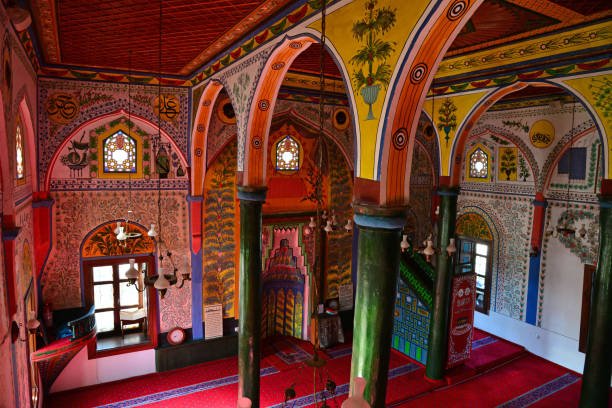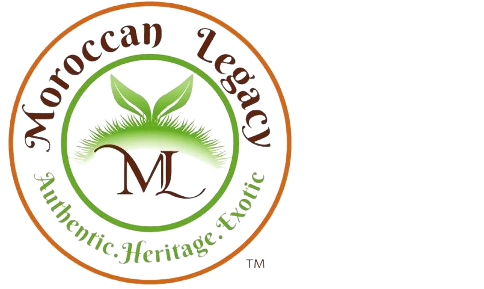Mystical World of Moroccan Gnawa Music
Far in the North African region, where the mysteries of the ancient world harmonize with the rhythm of contemporary living, is one of the world’s best-kept musical secrets. The Mystical World of Moroccan Gnawa Music lies alive with rhythms that touch emotions and comes with a legend and art that breaks the barriers of geography and history. Sourced from the sub-Saharan African, Berber, and Arabisms, this is music over tones of better living through music, music as a balm to the Moroccan society and as an insight into the richness of the country’s culture.
The Roots of Gnawa
Anyone wishing to understand the mythical world of Moroccan Gnawa music needs to look at its roots. The Gnawa people of Morroco are descendants of black slaves who were brought from the western part of Africa, and included with their cultural beliefs was music that later became known as Gnawa. The merging of African religion with Islam forged the development of a rich cultural identity element of Morocco today.
The Spiritual Essence
As far as its essence is concerned, the Mystical World of Moroccan Gnawa Music is, indeed, thoroughly spiritualistic by nature. Ma’alems are not only performers but rather masters and masters of rituals who play in order to call on the Divinity. The music is used as the means of meditation and curing; it has a great importance in lila—the all-night ceremonies combined to purify the body and the spirit.
Instruments and Rhythms
The Guembri: Heart of Gnawa
At the Mystical World of Moroccan Gnawa Music, the Gnawa music is the guembri, a three-stringed lute that plays both the melody and percussion lines. Is said to be curative and is credited with the ability to call up spirits as well as placing listeners into a sort of reverie.
Qraqeb: The Pulse of the Ritual
Together with the guembri, there are the qraqeb, metal finger cymbals that produce a syncopated, steady beat that is inherent to the songs of the Gnawa. With these orchestras especially masterfully performed, these instruments serve as the driving force that lures musicians and audiences into other realms of existence.
The Lila Ceremony
The lila, which means “night” in Arabic, is probably the most prominent time when the Mystic World of Moroccan Gnawa Music really shines. These ‘performances’, which sometimes can be performed until dawn, far from being symbolic representations, are ritual quests. Everyone dances vigorously, sings, or even goes into dancing trances while the ma’am plays music in response.
Colors and Spirits
Every stage of the lila is tied with different colors and spirits. These shifts are also accompanied by corresponding changes in music, for, during this dance, the ma’alem seems to have the duty of guiding the congregation through the rather complex sentiment and religious terrain that characterizes the modern Jewish wedding. This relation of color to the spirit and of the spirit to sound is the evidence of the depth that is within the art of Gnawa.
Gnawa in the Modern World
However traditional the Mystical World of Moroccan Gnawa Music may be, it is not stagnated and has evolved over the period of time. Modernist Architecture: In the last few decades, it has come into the limelight and integrates and coordinates with a variety of musical styles throughout the world.
Fusion and Evolution
Modern gnawa artists have adopted fusion as their major way of arranging their music as they incorporated jazz, blues, and electronics. This transformation has introduced the Mystical World of Moroccan Gnawa Music to new generations while not losing the spirituality. These celebrations have over time developed into beds for both social interchange and creativity, as realized within and through the Gnaoua World Music Festival in Essaouira.
The Healing Power of Gnawa
The symbol of the Mystical World of Moroccan Gnawa Music, of course, cannot go without his healing properties, which have been celebrated both in video games and films. Hearers and exponents of the music affirm that the music has remedial effects for physical and psychological illness, including pain and depression.
Scientific Interest
The powerful effect of Gnawa music has not been considered by the scientific world only as a kind of therapy. Musical experience and the supernatural power of the Gnawa rhythms and trance states have drawn the attention of the researchers for the investigation of the neurological treatments of the music’s beneficial properties.
Business continuity and cultural heritage: A duplex issue
With the rise of the Mystical World of Moroccan Gnawa Music, the onus to maintain the originality and the essence of it has grown in earnest. Gnawa Are music has also benefited from UNESCO’s listing as intangible cultural heritage since the group received this recognition in the year 2019, thus ensuring youth reinvention for generation.
Passing Down the Tradition
Ma’alems are also responsible for the Mystical World of Moroccan Gnawa Music and do share their experience and master newcomers through storytelling. This way of transmission also preserves the differences in terms of rhythm and spirit in music, as well as the ability to play the music properly.
Experiencing Gnawa
Some are interested in the Mystical World of Moroccan Gnawa Music; it transforms into an exciting adventure of a lifetime. However, it should be noted that whereas classical lila is a secret ceremony, there are many opportunities to meet with Gnawa music in Morocco and around the world.
Where to Listen
Essaouira: Famously referred to as the city of the Gnawa, it undertakes the Gnaoua World Music Festival each year.
Marrakech: Former place of residence of many Gnawa musicians and place of occasional concerts.
International venues: Currently, there are more and more Gnawa shows that are world-famous that can be viewed in various large cities.

Conclusion
The Mystical World of Moroccan Gnawa Music provides an insight into one of the most vibrant traditions that are still alive up to date. Starting as an African religion way back in historical times, Gnawa music has grown to embrace the world today as one of the most devastating and effective musical instruments for healing and bringing people together, especially through cultural similarities of art. When we listen to the sounds of the guembri and the clashing qraqeb, what we actually hear is centuries of tradition, prayer, and suffering.
Whether in a cabin like a traditional lila or on a large international festival stage, the Mystical World of Moroccan Gnawa Music encourages participants to think about the relationship between sound, the soul, and life. It does this, however, to remind us of the ability of music to make the soul and the spirit and to break the bonds that contain them.
FAQs
The following paper will examine what makes Gnawa music “mystical.”?
The religious part of Gnawa music is rooted in the tradition of the healing ceremonies of the followers. This is due to the hypnotic rhythm style of the music, coupled with the trance-like melodic structures and the link that Gnawa music and belief have to the supernatural.
Are they able to master more of the Gnawa music by those who are not Moroccans?
No, non-Moroccans can drive, ride, play, dance, or perform any form of Gnawa music. Finally, for as much as aspects of the meaning of the music may be difficult to completely fathom from a cultural stand alone, such as the spiritual and religious side of things, the actual musicality of the instruments and methods used is learnable. Almost all Moroccan arts and many global music schools and workshops provide courses in Gnawa music.

